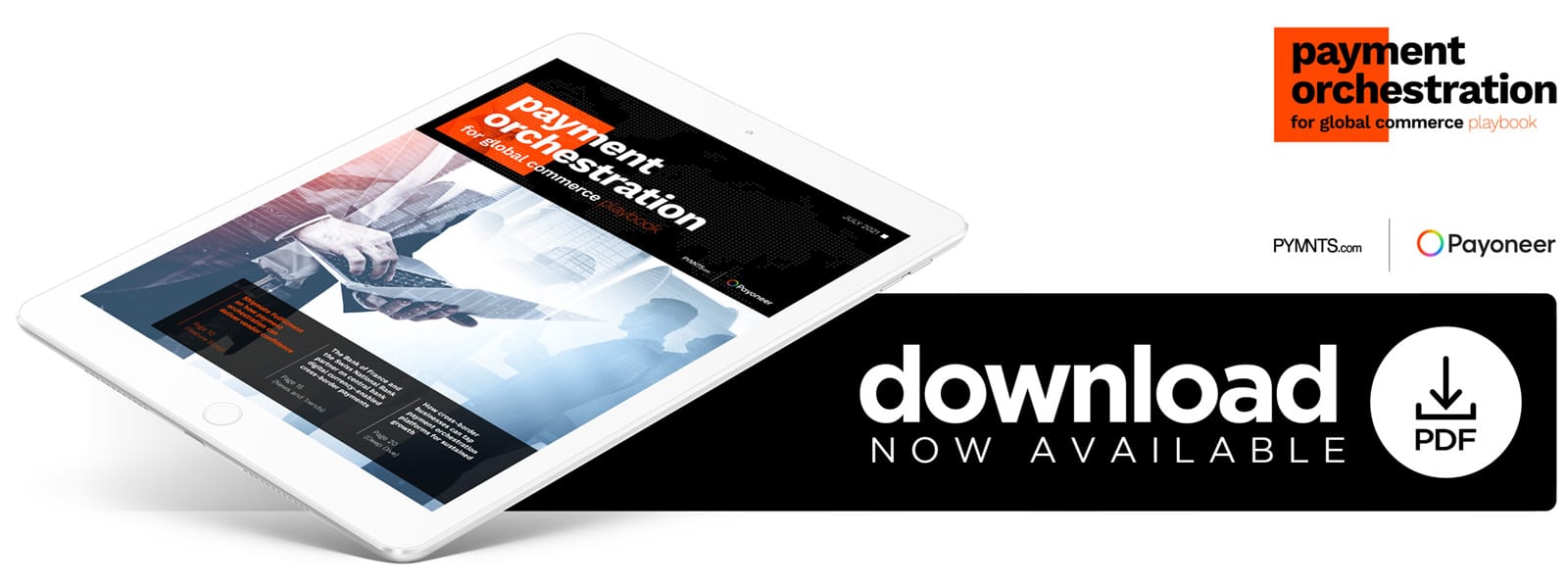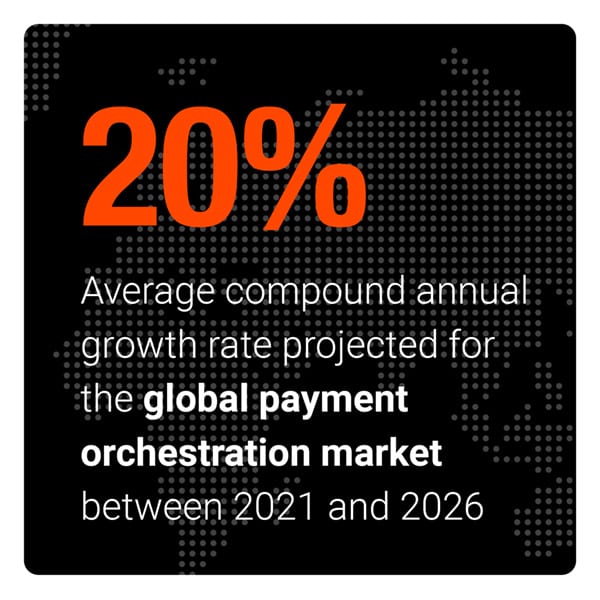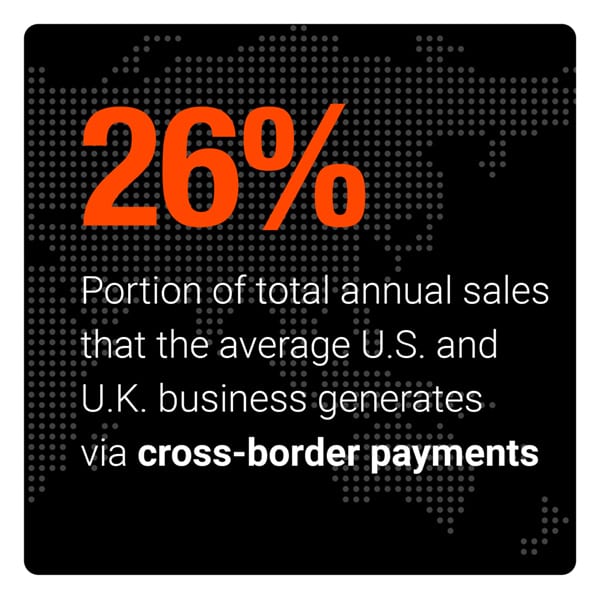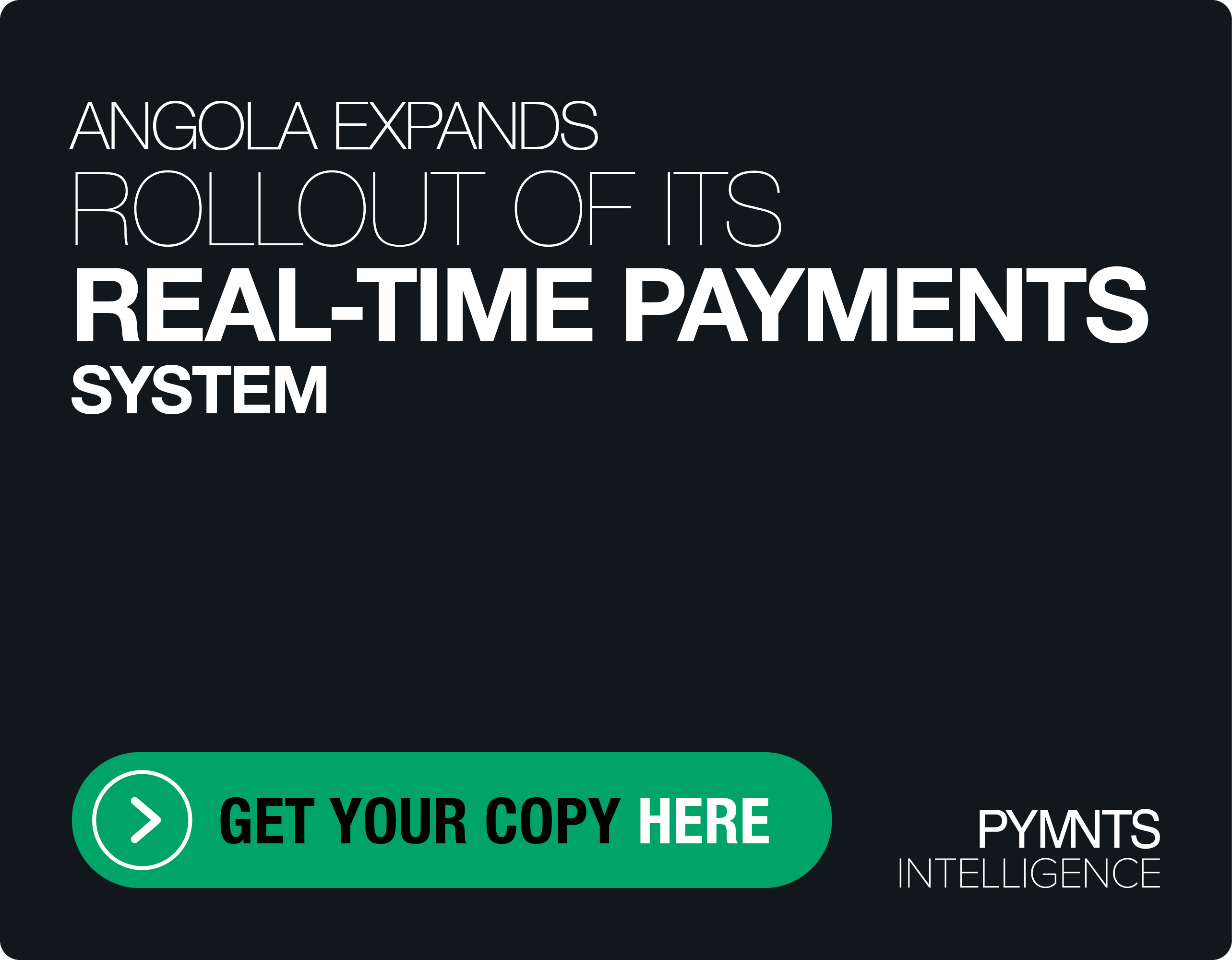Report: APIs Reduce Compliance Frictions For Cross-Border Merchants

 The international eCommerce space has flourished since March 2020. Consumers around the globe have been shifting to shopping and transacting online, giving eTailers all-new opportunities to expand into fresh markets to meet their growing demand for digital commerce experiences.
The international eCommerce space has flourished since March 2020. Consumers around the globe have been shifting to shopping and transacting online, giving eTailers all-new opportunities to expand into fresh markets to meet their growing demand for digital commerce experiences.
 Capitalizing on these new opportunities requires businesses to streamline their cross-border payment flows. However, many new entrants to the global market lack the technological and financial resources to efficiently conduct international commerce. The Payment Orchestration For Global Commerce Playbook, a PYMNTS and Payoneer collaboration, provides an overview of what payments orchestration entails and how payment orchestration platforms (POPs) can help international businesses optimize their cross-border payment flows and prepare them for long-term, international growth.
Capitalizing on these new opportunities requires businesses to streamline their cross-border payment flows. However, many new entrants to the global market lack the technological and financial resources to efficiently conduct international commerce. The Payment Orchestration For Global Commerce Playbook, a PYMNTS and Payoneer collaboration, provides an overview of what payments orchestration entails and how payment orchestration platforms (POPs) can help international businesses optimize their cross-border payment flows and prepare them for long-term, international growth.
Around The Cross-Border Payment Orchestration Ecosystem
To capitalize on the unprecedented digital growth opportunities that have emerged over the past 16 months, eCommerce enterprises are well aware that they must improve their cross-border operations’ efficiency. Forty-three percent of international U.S. businesses plan to enable supplier payments to digital wallets in the next three years, for example, and 29 percent plan to enable cross-border real-time payments during that time. Many more plan to adopt artificial intelligence- (AI) and machine learning-based (ML) payments automation and other cross-border payments innovations.
Banks and card networks are also gearing up to provide cross-border payment innovations to meet international businesses’ demands for easier, faster and more efficient cross-border transactions. Goldman Sachs and Visa, for example, are collaborating on a new application programming interface (API) that will allow the latter’s corporate clients to make account-to-account payments to and from 92 nations. Meanwhile, governments and central banks across the globe, including the Swiss National Bank and the Bank Of France, are experimenting with digital currency solutions to mitigate many of the fric tions that plague manual cross-border payments solutions.
tions that plague manual cross-border payments solutions.
There is no shortage of new technologies and services for businesses looking to optimize their cross-border payment flows, and payment orchestration is uniquely suited to tackling the frictions businesses face when conducting international transactions. The result is a mounting global demand for POPs, which can help them adapt their payments operations more quickly and easily.
For more on these stories and other recent cross-border payments orchestration headlines, download the Playbook.
How Payment Orchestration Layers Can Help Companies Smooth Frictions
The past 16 months have presented countless opportunities for eCommerce businesses to expand, with more consumers shifting to shopping and paying online than ever. However, not all eCommerce retailers are equipped with the payment capabilities they need to transact with international businesses partners. In this month’s Feature Story, PYMNTS speaks with Brian Antar, CEO of logistics startup Shipmate Fulfillment, about how eCommerce businesses can leverage payment orchestration layers to establish an international presence and take advantage of the global eCommerce boom.
Deep Dive: How International Enterprises Can Tap POPs’ Flexibility For Sustained Gro wth
wth
Businesses must add and remove capabilities from their payment stacks as they grow, but doing so can be time-consuming and expensive. Luckily, POPs can help businesses make changes to their payments stacks without rebuilding their IT systems from scratch. This month’s Deep Dive explores the infrastructural challenges that international businesses often encounter when expanding into new markets and the long-term benefits they may gain from using POPs.
About The Playbook
The inaugural edition of the Payment Orchestration For Global Commerce Playbook, a PYMNTS and Payoneer collaboration, will provide a comprehensive overview of what payment orchestration entails and how it can help international businesses reach their payment goals.
